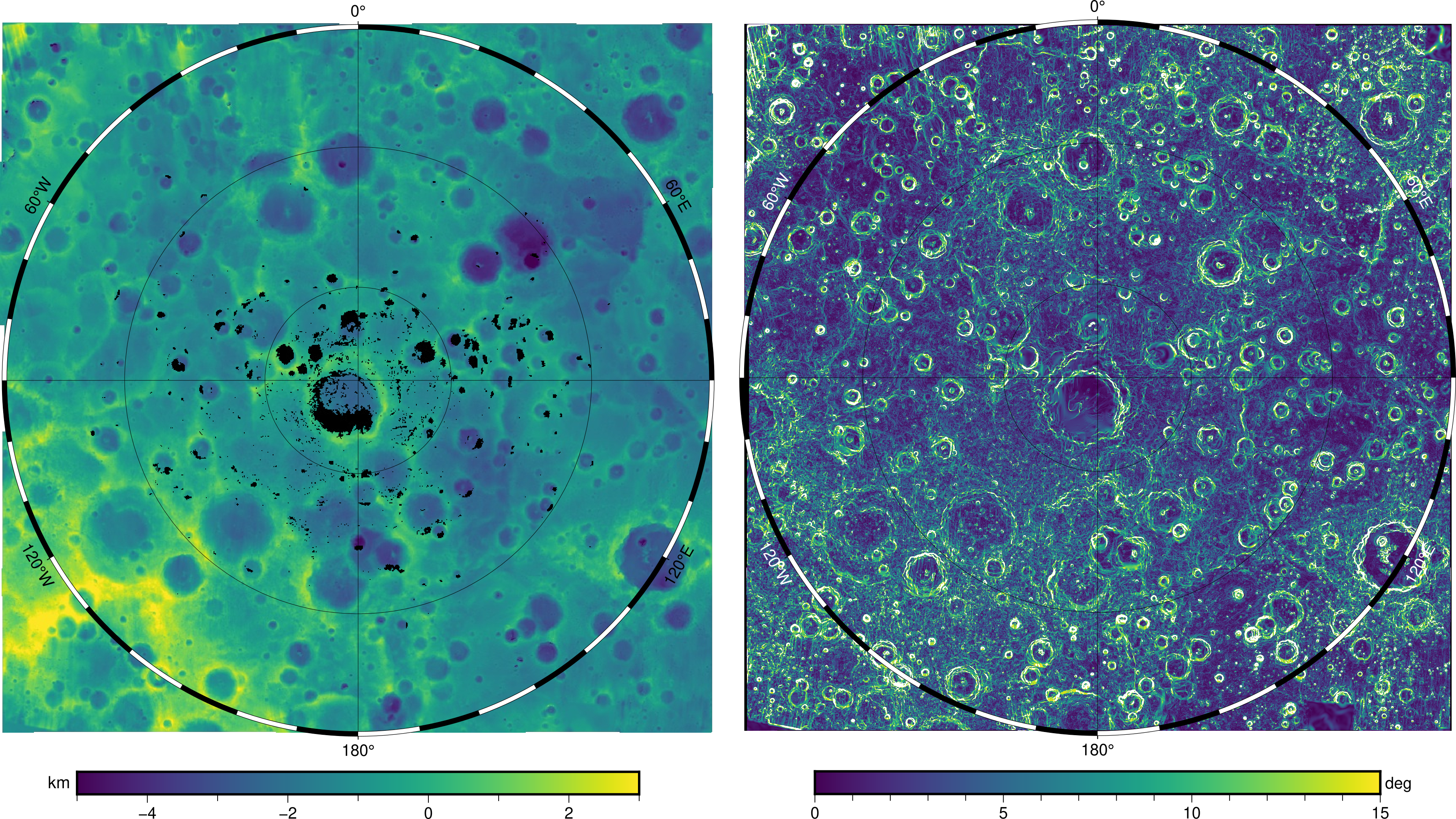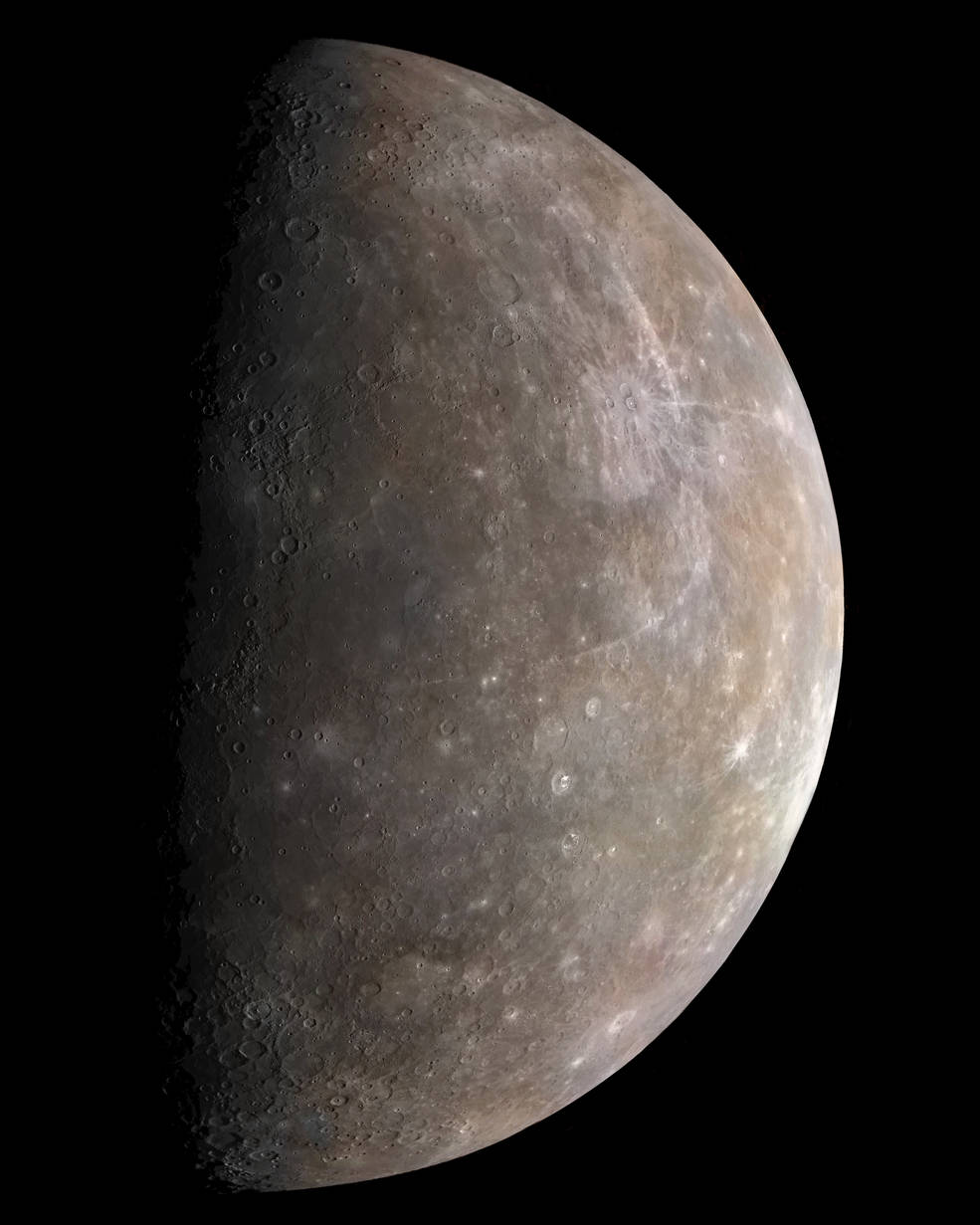Surface Features

Notable Landmarks
Caloris Basin
One of the largest known impact craters in the solar system, stretching about 1,550 km (960 miles) across Mercury's surface.
Carnegie Rupes
A massive cliff over 600 km (370 miles) long, formed as Mercury’s interior cooled and contracted, buckling its surface.
Raditladi Basin
A relatively young impact basin about 263 km (163 miles) wide, showing signs of tectonic and volcanic activity.
North Polar Ice Deposits
Permanently shadowed craters near Mercury’s poles contain water ice, despite the planet’s scorching daytime temperatures.











